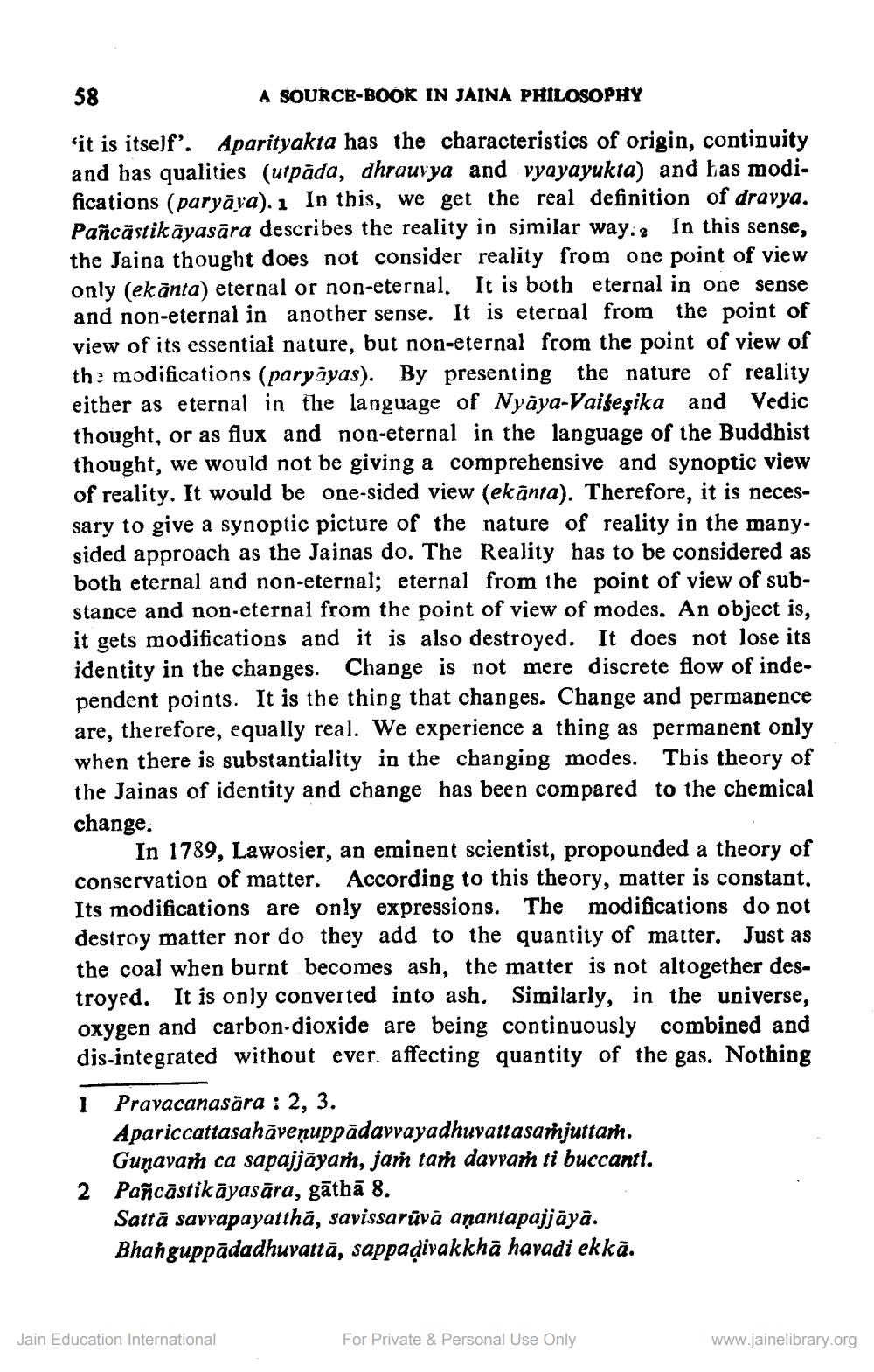________________
Sg
A SOURCE-BOOK IN JAINA PHILOSOPHY
'it is itself'. Aparityakta has the characteristics of origin, continuity and has qualities (utpäda, dhrauvya and vyayayukta) and bas modifications (paryāya). 1 In this, we get the real definition of dravya. Pancāstikāyasāra describes the reality in similar way. In this sense, the Jaina thought does not consider reality from one point of view only (ekānta) eternal or non-eternal. It is both eternal in one sense and non-eternal in another sense. It is eternal from the point of view of its essential nature, but non-eternal from the point of view of the modifications (paryāyas). By presenting the nature of reality either as eternal in the language of Nyāya-Vaiseșika and Vedic thought, or as flux and non-eternal in the language of the Buddbist thought, we would not be giving a comprehensive and synoptic view of reality. It would be one-sided view (ekanta). Therefore, it is necessary to give a synoptic picture of the nature of reality in the manysided approach as the Jainas do. The Reality has to be considered as both eternal and non-eternal; eternal from the point of view of substance and non-eternal from the point of view of modes. An object is, it gets modifications and it is also destroyed. It does not lose its identity in the changes. Change is not mere discrete flow of independent points. It is the thing that changes. Change and permanence are, therefore, equally real. We experience a thing as permanent only when there is substantiality in the changing modes. This theory of the Jainas of identity and change has been compared to the chemical change.
In 1789, Lawosier, an eminent scientist, propounded a theory of conservation of matter. According to this theory, matter is constant. Its modifications are only expressions. The modifications do not destroy matter nor do they add to the quantity of matter. Just as the coal when burnt becomes ash, the matter is not altogether destroyed. It is only converted into ash. Similarly, in the universe, oxygen and carbon dioxide are being continuously combined and dis-integrated without ever. affecting quantity of the gas. Nothing 1 Pravacanasāra : 2, 3.
Apariccattasahāveņuppādavvayadhuvattasarjuttarh.
Gunavar ca sapajjāyar, jam tam davvar ti buccanti. 2 Pañcāstikāyasāra, gāthā 8.
Sattā savvapayatthā, savissarūvā anantapajjāyā. Bhanguppādadhuvattā, sappadivakkha havadi ekkā.
Jain Education International
For Private & Personal Use Only
www.jainelibrary.org




